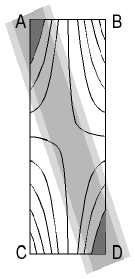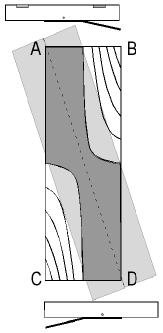




Once the half-way stage is reached, you have the choice of continuing to plane in a direction parallel to DA, or to plane parallel to CB. In this case, since CB is convex, short strokes in the centre of the board will be needed, gradually lengthening as you go.
Make sure that the underside of the board is always properly supported, or the weight of the planing action will distort the board.